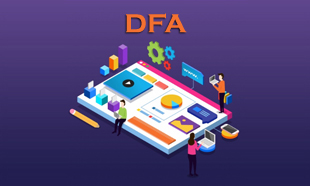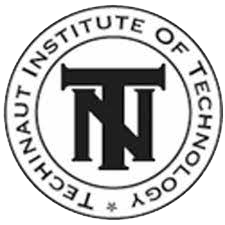0
Unlock the world of finance with Ashish Academy's Diploma in Financial Application course in Jeypore, Koraput, Odisha. Master Tally, taxation, payroll, and financial reporting. Equip yourself with essential skills for a thriving career in financial management.
DIPLOMA IN FINANCIAL APPLICATION
In the contemporary world of finance, proficiency in financial applications has become imperative for individuals seeking to excel in various financial roles and industries. Recognizing the significance of equipping individuals with comprehensive financial software skills, Ashish Academy, a franchise of Techinaut Institute of Technology in Jeypore, Koraput, Odisha, offers a six-month course named "Diploma in Financial Application (DFA)." This comprehensive program aims to provide participants with the knowledge and skills to navigate financial software effectively, enabling them to streamline financial processes, analyze data, and make informed decisions in finance.
THE OBJECTIVE OF THE COURSE:
The primary objective of the Diploma in Financial Application (DFA) course is to equip participants with practical skills in financial software applications and enhance their understanding of economic concepts and processes. Through a structured curriculum and hands-on training, the course aims to develop participants' proficiency in essential financial software tools, such as Tally, and prepare them for diverse career opportunities in finance, accounting, and related fields. By the end of the course, participants will be equipped with the knowledge and skills necessary to excel in the dynamic and competitive world of financial applications.
COURSE OVERVIEW:
In the contemporary world of finance, proficiency in financial applications has become imperative for individuals seeking to excel in various financial roles and industries. Recognizing the significance of equipping individuals with comprehensive financial software skills, Ashish Academy, a franchise of Techinaut Institute of Technology in Jeypore, Koraput, Odisha, offers a six-month course named "Diploma in Financial Application (DFA)." This comprehensive program aims to provide participants with the knowledge and skills to navigate financial software effectively, enabling them to streamline financial processes, analyze data, and make informed decisions in finance.
The objective of the course
The primary objective of the Diploma in Financial Application (DFA) course is to equip participants with practical skills in financial software applications and enhance their understanding of economic concepts and processes. Through a structured curriculum and hands-on training, the course aims to develop participants' proficiency in essential financial software tools, such as Tally, and prepare them for diverse career opportunities in finance, accounting, and related fields. By the end of the course, participants will be equipped with the knowledge and skills necessary to excel in the dynamic and competitive world of financial applications.
Section 1: Basics of Computer
The course commences with an exploration of the basics of computer science, providing participants with a foundational understanding of computer hardware, software, and peripheral devices. Topics covered include computer fundamentals, operating systems, and basic computer operations. Participants also learn about file management, troubleshooting techniques, and internet fundamentals.
Section 2: Computer Appreciation
Building upon the basics, participants delve into computer appreciation, gaining insights into the role of computers in various industries and domains. They explore the evolution of computing technology, emerging trends in computer applications, and the impact of technology on society and business. Participants also learn about ethical considerations and best practices in computer usage.
Section 3: Word Processing
Most of the course is dedicated to mastering word processing software, such as Microsoft Word. Participants learn to create, edit, format, and manage documents efficiently using features such as styles, formatting tools, and document templates. They also explore advanced functionalities, including mail merge, collaboration tools, and document security measures.
Section 4: Spreadsheet Package
Participants acquire skills in using spreadsheet software, such as Microsoft Excel, for financial data analysis and manipulation. They learn to create, format, and manage spreadsheets effectively, using features such as formulas, functions, charts, and pivot tables. Additionally, participants explore advanced functionalities, including data validation, conditional formatting, and macros, tailored specifically for financial analysis and reporting.
Section 5: Presentation Package
In this section, participants learn to design and deliver impactful presentations using software like Microsoft PowerPoint. They explore design elements, including slide layouts, themes, and transitions, to create visually engaging presentations. Participants also learn to incorporate financial data, charts, and graphs into their presentations to communicate complex financial information effectively.
Section 6: Introduction to the Internet
Participants receive an introduction to the Internet and understand its role in facilitating communication, research, and information sharing in the financial domain. They learn to navigate the web effectively, use search engines to find financial information and evaluate online resources for reliability and credibility. Additionally, participants explore internet safety and security measures relevant to financial transactions and data protection.
Section 7: E-Mail
Participants gain proficiency in using e-mail as a communication tool, learning to create, send, receive, and manage e-mails efficiently. They explore features such as e-mail composition, attachments, folders, and filters to organize their inbox and streamline communication. Moreover, participants learn about e-mail etiquette and best practices for professional communication in the financial domain.
Section 8: Introduction to Tally
This section introduces participants to Tally, a widely used accounting software for managing financial transactions and business operations. They learn about Tally's interface, navigation, and basic functionalities, including ledger creation, voucher entry, and financial reporting. Participants also explore Tally's role in automating accounting processes and enhancing financial management efficiency.
Section 9: Administration in Tally
Building upon the introduction, participants delve deeper into Tally's administrative features, gaining insights into user management, security controls, and data backup procedures. They learn to configure Tally for specific organizational requirements, set user permissions, and ensure data integrity and confidentiality. Additionally, participants explore Tally's audit trail capabilities for tracking and monitoring financial transactions.
Section 10: Managing Groups, Ledgers, and Vouchers
Participants acquire advanced skills in managing groups, ledgers, and vouchers in Tally, learning to organize financial data systematically and efficiently. They learn to create and maintain ledger accounts, group them hierarchically, and record various financial transactions using vouchers. Additionally, participants explore features such as budgeting, cost centers, and multi-currency support in Tally.
Section 11: Cost Centers and Cost Categories
In this section, participants focus on cost centers and cost categories in Tally and understand their significance in cost allocation and analysis. They learn to create and manage cost centers and categories to track expenses and revenue associated with specific projects, departments, or activities. Participants also explore Tally's reporting capabilities for analyzing cost-center-wise performance and profitability.
Section 12: Introduction to Budgets
Participants gain insights into budgeting processes and techniques, understanding their role in financial planning and control. They learn to create, monitor, and analyze budgets using Tally's budgeting module, setting financial targets and comparing actual performance against budgeted figures. Additionally, participants explore variance analysis techniques to identify deviations and take corrective actions.
Section 13: Introduction to Voucher
Participants delve into the concept of vouchers in accounting, understanding their role in documenting financial transactions accurately and transparently. They learn about different types of vouchers, such as payment vouchers, receipt vouchers, journal vouchers, and contra vouchers, and their corresponding accounting entries. Additionally, participants explore Tally's voucher entry functionalities for recording transactions efficiently.
Section 14: Currencies (Multiple Currencies and Foreign Exchange)
Participants explore Tally's capabilities for handling multiple currencies and foreign exchange transactions, understanding their significance in international business operations. They learn to set up multi-currency support in Tally, configure exchange rates, and record foreign currency transactions accurately. Additionally, participants explore Tally's reporting features for analyzing foreign exchange gains and losses.
Section 15: Inventory Information
In this section, participants focus on inventory management in Tally and understand its role in tracking and controlling stock levels and costs. They learn to set up inventory masters, record stock transactions, and generate inventory reports for monitoring stock levels, valuation, and movement. Additionally, participants explore features such as batch management, stock aging analysis, and inventory valuation methods.
Section 16: Voucher Entry
Participants acquire advanced skills in voucher entry in Tally, learning to record complex financial transactions accurately and efficiently. They explore features such as voucher types, class, and customization to streamline data entry processes and ensure compliance with accounting standards. Additionally, participants learn to automate voucher entry tasks using Tally's voucher templates and recurring vouchers.
Section 17: Displaying Information from Tally
Participants gain proficiency in generating and customizing financial reports and statements in Tally, learning to extract actionable insights from economic data. They explore Tally's reporting capabilities, including balance sheets, profit and loss, cash flow, and fund flow statements. Additionally, participants learn to customize reports, drill down into details, and export data for further analysis.
Section 18: Introduction to Taxation
Participants are introduced to taxation principles and practices and understand their implications for financial management and compliance. They learn about different types of taxes, including income tax, goods and services tax (GST), and value-added tax (VAT), and their respective accounting treatments. Additionally, participants explore Tally's taxation features for accurately calculating and reporting tax liabilities.
Section 19: Introduction to Payroll
In this section, participants focus on payroll management processes and procedures, understanding their importance in employee compensation and compliance. They learn to set up payroll masters, define salary structures, and process transactions using Tally's payroll module. Additionally, participants explore features such as attendance tracking, leave management, and statutory compliance in payroll processing.
Hands-On Training and Practical Projects
Participants engage in hands-on training sessions and practical projects throughout the course to apply their knowledge and skills in real-world scenarios. They work on assignments, case studies, and simulations that simulate the demands of the workplace, allowing them to demonstrate their proficiency in financial applications and problem-solving abilities.
CONCLUSION:
In conclusion, the Diploma in Financial Application (DFA) course offered by Ashish Academy provides participants with a comprehensive understanding of financial concepts and practical skills in financial software applications. Through a structured curriculum and hands-on training, participants develop proficiency in essential financial software tools, such as Tally, and prepare themselves for diverse career opportunities in finance, accounting, and related fields. With its focus on practical skills and real-world applications, the DFA course equips participants with the knowledge and skills necessary to excel in the dynamic and competitive world of financial applications.


